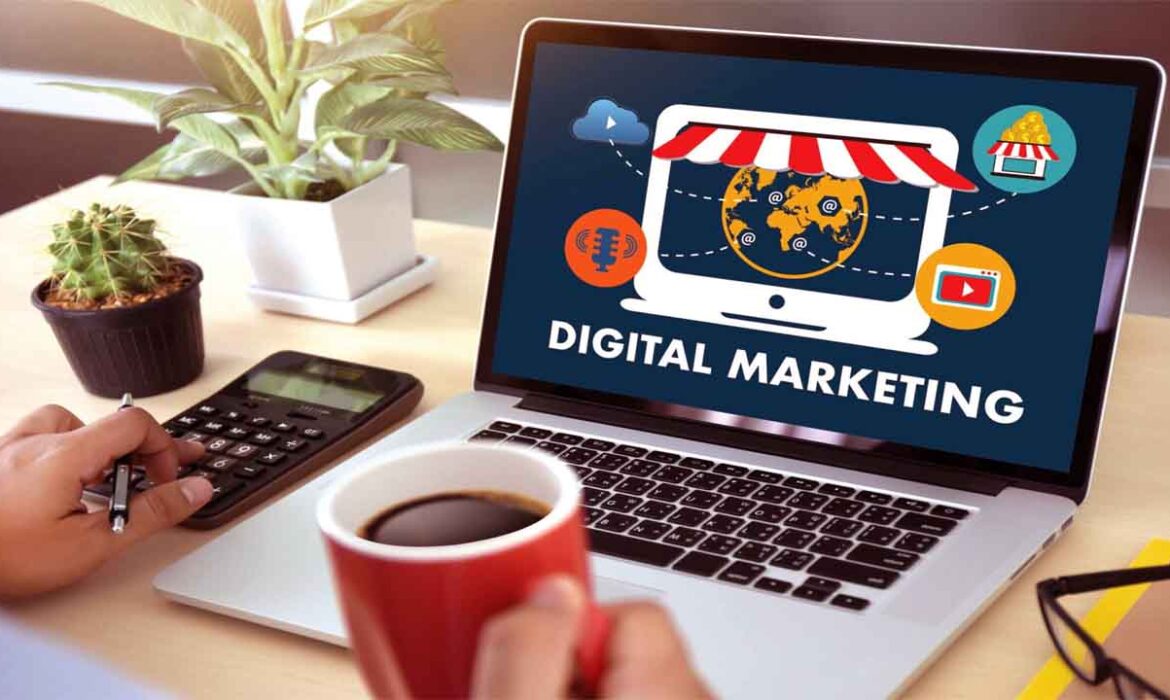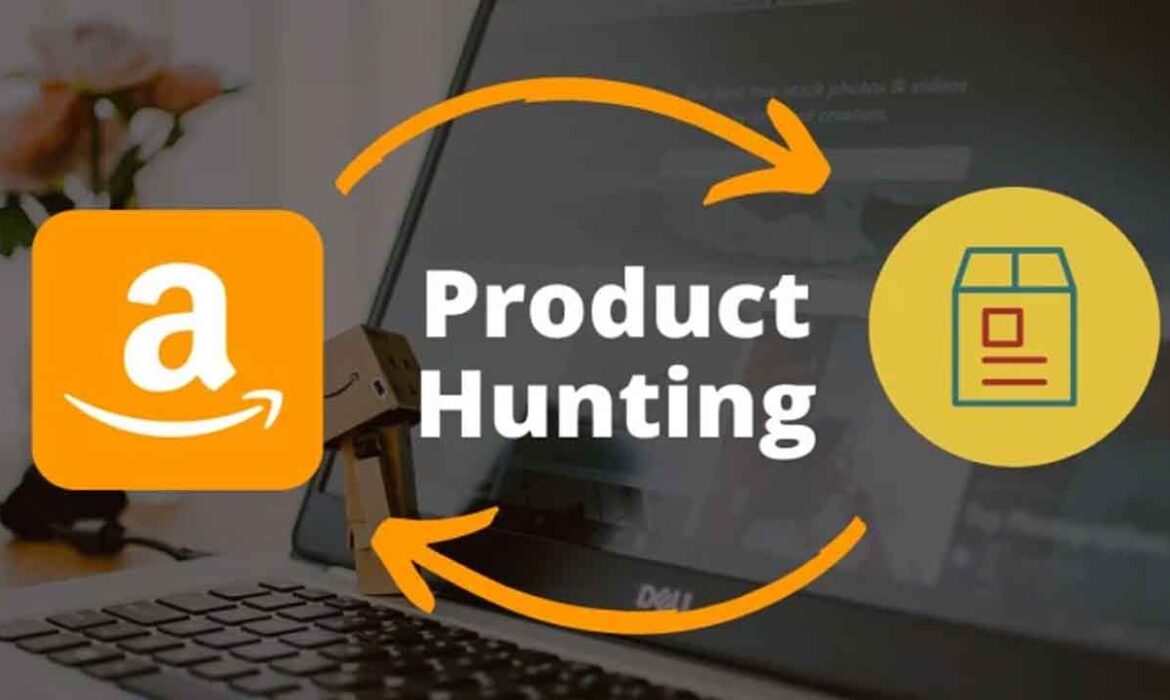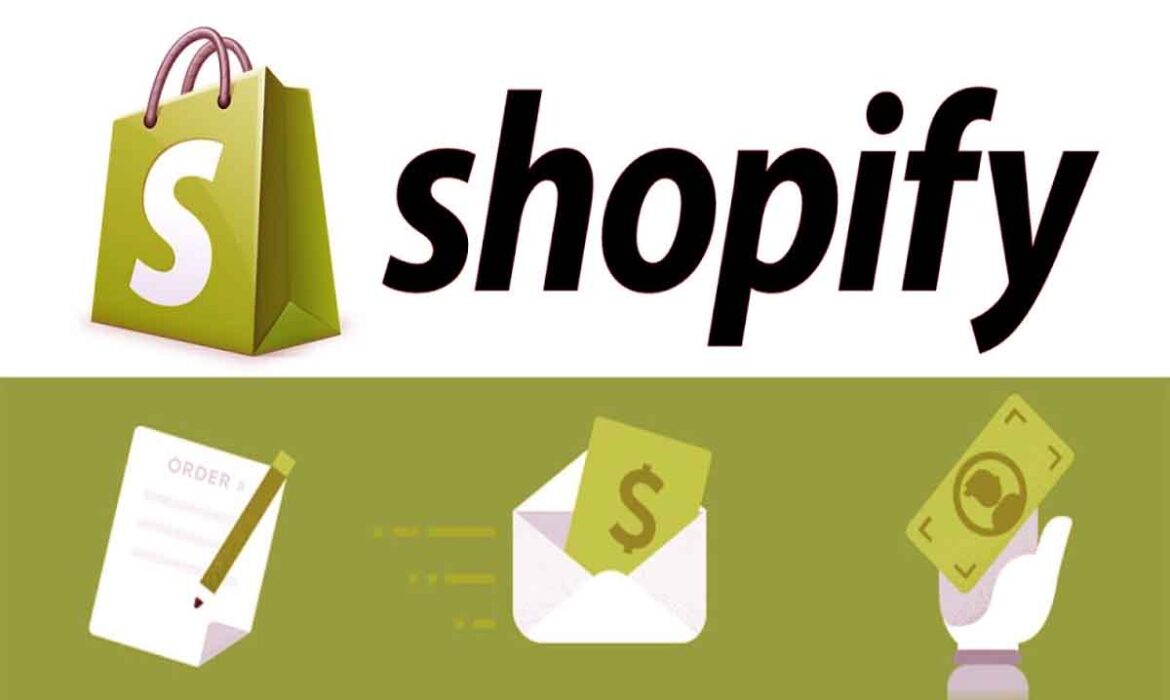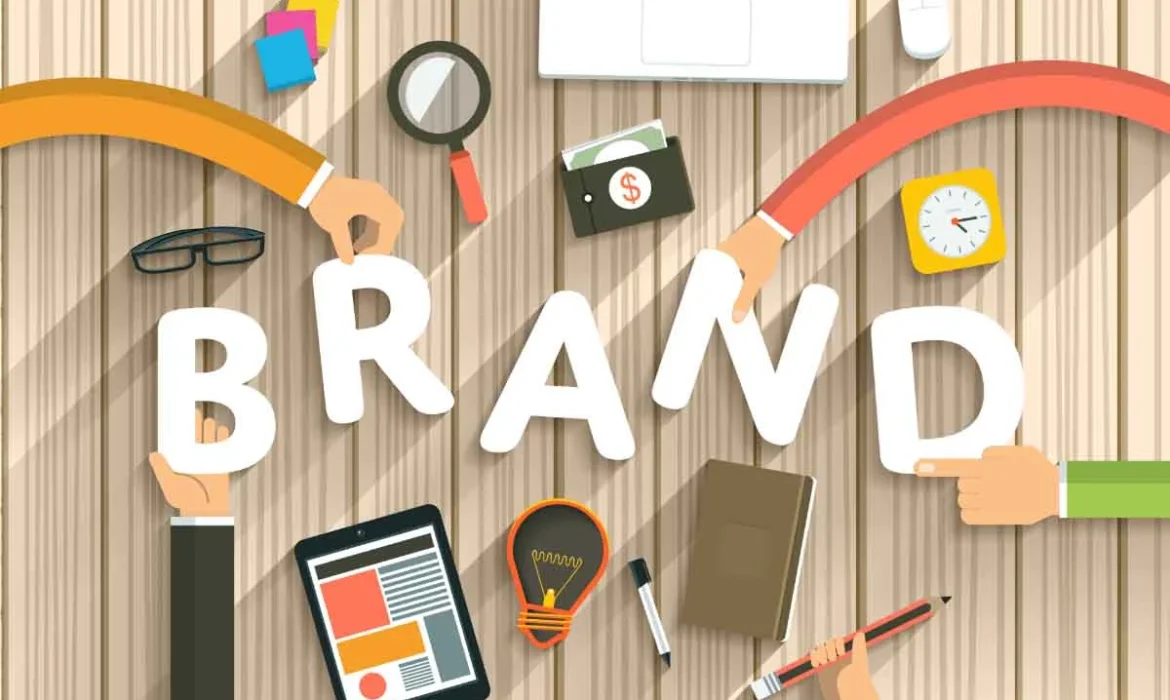Digital Marketing for Small Businesses That Delivers Results
In today’s rapidly evolving digital landscape, digital marketing for small businesses is no longer a luxury—it’s a necessity. Whether you run a home-based boutique, a local bakery, or a niche online store, the internet offers countless opportunities to grow, connect with your audience, and convert clicks into loyal customers. With limited resources and tighter budgets, small businesses must be strategic and creative to stay competitive.
Why Digital Marketing Matters for Small Businesses
Traditional marketing channels like TV, newspapers, or billboards are costly and difficult to track. Digital marketing for small businesses, however, offers affordable solutions with measurable results. It allows even the smallest enterprises to reach a global audience, build brand awareness, and engage customers in real-time.
More importantly, digital platforms level the playing field. With the right tactics, small brands can compete with much larger companies and even outperform them in niche markets.
Understanding Your Audience
Before diving into any digital campaign, understanding your target audience is crucial. Ask yourself:
- Who are your ideal customers?
- What are their interests, pain points, and buying behaviors?
- Which platforms do they spend the most time on?
Small businesses can use tools like Google Analytics, Facebook Insights, and customer feedback forms to gather this data. This information helps you tailor your message, choose the right platforms, and create content that resonates with your audience.
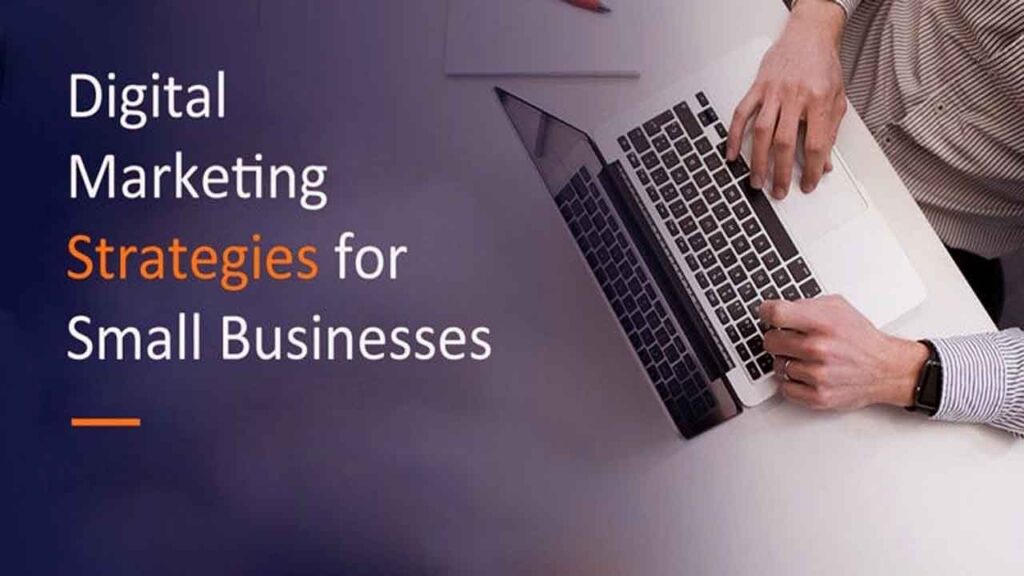
Building a Strong Online Presence
A strong online presence is the foundation of all digital marketing for small businesses. This includes:
1. Website Development
Your website is your digital storefront. It should be professional, easy to navigate, and optimized for mobile devices. Key elements include:
- Clear call-to-action (CTA)
- Fast loading speed
- Contact information
- SEO-friendly design
2. Search Engine Optimization (SEO)
Investing in SEO improves your site’s visibility on Google. Start by optimizing on-page elements like titles, meta descriptions, headers, and internal links. Use tools like Ubersuggest or Ahrefs to find relevant keywords, including your primary term, digital marketing for small businesses.
Don’t forget local SEO—claim your Google Business Profile and gather positive reviews to rank higher in local searches.
Content Marketing: Educate and Engage
Content marketing is a cost-effective way to build trust and position yourself as an expert in your field. Blogs, videos, infographics, and ebooks are excellent mediums to provide value to your audience.
Start a blog on your website and consistently publish articles on topics relevant to your industry. For example, if you own a small bakery, write about baking tips, recipes, or the benefits of organic ingredients.
Ensure every piece of content is optimized with your target keyword, digital marketing for small businesses, to boost search engine rankings and drive organic traffic.
Social Media Marketing: Building Communities
Social media platforms are essential for brand building and customer engagement. Facebook, Instagram, LinkedIn, and even TikTok offer valuable opportunities to reach and communicate with your audience.
Here’s how small businesses can leverage social media:
- Post consistently with a mix of educational, promotional, and entertaining content.
- Use stories and reels to humanize your brand.
- Respond to comments and messages to build loyalty and trust.
- Run contests and giveaways to increase engagement and reach.
Platforms like Meta Business Suite or Hootsuite can help you manage and schedule posts across multiple platforms.
Email Marketing: Personalized Communication
Email marketing remains one of the highest ROI strategies for digital marketing for small businesses. It allows you to build relationships with potential and current customers, promote products, and drive traffic to your site.
Tips for successful email marketing:
- Offer a lead magnet (like a free e-book or discount) to grow your list.
- Use a professional email service like Mailchimp or ConvertKit.
- Segment your list to deliver more personalized content.
- Analyze open rates and click-throughs to refine your campaigns.
Pay-Per-Click (PPC) Advertising
If you have a small budget and want immediate visibility, PPC campaigns on Google Ads or Facebook Ads can be very effective. With PPC, you only pay when someone clicks on your ad.
Here’s how to maximize PPC success:
- Target specific keywords like “affordable SEO for small businesses” or “best marketing tools for startups.”
- Set clear goals—whether it’s traffic, conversions, or leads.
- A/B test your ad copies and landing pages.
- Monitor analytics regularly and adjust your strategy accordingly.
Influencer and Affiliate Marketing
You don’t need to hire mega-influencers with millions of followers. Micro-influencers and local content creators often offer better engagement rates and lower costs. Reach out to individuals in your niche who can authentically promote your products or services.
Similarly, affiliate marketing allows you to partner with people or websites that earn commissions for sending traffic or sales your way.
Both methods are scalable and low-risk, making them ideal for small businesses exploring digital marketing for small businesses strategies.
Use of Analytics and Tracking Tools
Data-driven decision-making is the backbone of any successful digital campaign. Platforms like Google Analytics, Facebook Pixel, and Hotjar provide insights into user behavior, traffic sources, and conversion rates.
Track metrics such as:
- Website Traffic
- Bounce rate
- Conversion rate
- Customer acquisition cost (CAC)
- Return on investment (ROI)
By consistently analyzing this data, you can identify what’s working, cut what’s not, and optimize your strategies for better performance.
Budget-Friendly Tools for Small Business Marketing
One of the best things about digital marketing for small businesses is the availability of free and affordable tools:
- Canva – for graphic design
- Trello or Asana – for project management
- Buffer or Hootsuite – for social media scheduling
- MailerLite or Mailchimp – for email marketing
- Google Analytics and Search Console – for performance tracking
Using these tools not only saves time and money but also streamlines your operations so you can focus on growth.
Common Mistakes to Avoid
- Lack of strategy: Jumping in without a plan leads to poor results.
- Ignoring mobile optimization: Most users access content via smartphones.
- Over-promotion: Too many sales pitches turn off audiences.
- Neglecting customer reviews: Social proof drives trust and conversions.
- Failure to adapt: The digital space evolves constantly—stay updated.
Avoiding these pitfalls ensures your efforts in digital marketing for small businesses yield the best results.
Final Thoughts
Digital marketing is a game-changer for small businesses. From SEO and content marketing to email campaigns and paid ads, every strategy plays a unique role in business growth. With the right approach, tools, and consistency, even the smallest company can build a powerful online presence and attract a loyal customer base.
At E-commerce Planners, we believe that digital success is within reach for every small business. Whether you’re just starting or looking to scale, implementing a focused, smart, and cost-effective digital strategy will set you on the path to long-term success.
Affordable Digital Marketing Experts – Book Your Free Audit
In today’s digital era, affordable digital marketing isn’t just a luxury—it’s a necessity for businesses trying to gain visibility, build brand authority, and generate sustainable revenue. Whether you’re a startup, a small business, or a growing ecommerce brand, effective marketing doesn’t have to break the bank. With the right approach and strategic tools, companies can achieve substantial results while keeping costs in check.
At E-commerce Planners, we understand that not every business has the luxury of a massive marketing budget. That’s why we craft smart, affordable strategies that deliver results without stretching your resources. This article dives deep into the world of budget-friendly marketing techniques, guiding you through key tactics and tools you can start using today.
Why Small Businesses Need Affordable Digital Marketing
Small businesses often operate on tight margins. Every dollar spent must justify its value. That’s why affordable digital marketing is vital for:
- Building online presence: With limited in-store traffic, having an online identity is essential.
- Generating leads: Digital channels offer targeted lead generation methods far cheaper than traditional media.
- Competing with larger brands: Smart digital strategies can give smaller players a competitive edge.
- Tracking ROI: Digital marketing offers tools for measuring every campaign, making it easier to adjust and optimize.

Top Affordable Digital Marketing Strategies
1. Search Engine Optimization (SEO)
SEO is one of the most cost-effective marketing methods. It increases your visibility on Google and drives organic traffic to your website. Focus on:
- Keyword optimization
- On-page SEO (titles, meta tags, content quality)
- Technical SEO (site speed, mobile-friendliness)
- Local SEO (especially for local businesses)
Ecommerce Planners ensures that your business ranks for relevant keywords with minimal spending and maximum impact.
2. Content Marketing
High-quality, valuable content is a low-cost way to engage audiences and build trust. Blog posts, how-to guides, case studies, and videos can be created in-house or outsourced cost-effectively. Content marketing:
- Boosts SEO rankings
- Establishes brand authority
- Attracts and educates customers
For example, this very article is part of a content strategy designed to showcase expertise while targeting specific keywords like affordable digital marketing.
3. Email Marketing
Email remains one of the highest ROI digital marketing channels. Tools like Mailchimp or ConvertKit offer free or low-cost plans, perfect for startups. Use email marketing to:
- Nurture leads with automation
- Send personalized offers and updates
- Drive website traffic
With E-commerce Planners, we help you design clean, high-converting email funnels without adding to your expenses.
4. Social Media Marketing
Platforms like Instagram, Facebook, LinkedIn, and TikTok allow you to connect with your audience organically or through minimal ad spend. Posting regularly, engaging followers, and using the right hashtags can bring great visibility.
For even better results, consider micro-influencers in your niche. They often charge far less than big influencers but deliver high engagement and targeted audiences.
5. Pay-Per-Click (PPC) on a Budget
While PPC can get expensive, when done right, it can be extremely efficient—even for tight budgets. Focus on:
- Long-tail keywords (cheaper than broad terms)
- Geo-targeting for local reach
- Retargeting ads (to re-engage past visitors)
Ecommerce Planners provides intelligent ad setup and monitoring so you don’t waste a penny.
6. Referral and Affiliate Marketing
Word-of-mouth still works—but in the digital world, it’s amplified. Setting up referral programs or affiliate marketing can generate sales without upfront costs. You only pay when results are delivered.
Tools for Affordable Digital Marketing
Many powerful marketing tools are free or offer budget plans. Here are some to consider:
- Google Analytics – Track site performance and visitor behavior.
- Canva – Design social media posts, infographics, and more.
- Ubersuggest – Basic keyword research and SEO audits.
- Mailchimp – Beginner-friendly email automation.
- Hootsuite/Buffer – Schedule and manage social media content.
Ecommerce Planners leverages these tools (and more) to create a cohesive, cost-efficient digital marketing plan tailored to your goals.
Measuring Success on a Budget
Affordable doesn’t mean cheap—it means strategic. So it’s important to track and adjust your strategies regularly. Here are some ways to measure performance:
- Conversion Rates: Are your campaigns generating leads or sales?
- Bounce Rates: Are visitors leaving quickly?
- Customer Acquisition Cost (CAC): How much are you spending per customer?
- Click-Through Rates (CTR): Are people engaging with your ads or emails?
By monitoring these KPIs, Ecommerce Planners ensures your marketing efforts remain effective and affordable.
Mistakes to Avoid in Budget Digital Marketing
While cost-saving is important, there are pitfalls to watch for:
- Avoiding strategy: Jumping in without a plan leads to waste.
- Ignoring analytics: Not tracking performance limits growth.
- Over-relying on one channel: Diversity is key for resilience.
- Using low-quality visuals or content: This damages credibility, even if it is cheap.
At E-commerce Planners, we help businesses avoid these traps by aligning marketing with goals, brand values, and audience behavior.
Case Study: Affordable Digital Marketing in Action
One of our recent clients, a small home décor e-commerce store, came to us with a limited budget. By focusing on:
- Keyword-rich blog content
- Local SEO
- Targeted Facebook and Instagram ads
- Email drip campaigns for abandoned carts
…they saw a 300% increase in traffic and a 140% boost in conversions within 90 days—without exceeding a modest budget.
This is the power of affordable digital marketing done right.
Final Thoughts
Affordable digital marketing isn’t about cutting corners—it’s about making smarter choices. With the right blend of SEO, content, email, and social media, even small businesses can thrive in the digital landscape. At E-commerce Planners, our mission is to empower businesses with cost-effective strategies that drive measurable growth. Whether you’re launching your first campaign or optimizing existing ones, we’re here to help you succeed—efficiently and affordably.
Amazon Product Hunt Services to Find Winning Products
In a world of e-commerce, success often comes down on one thing: choosing the right product. This is the place where the art of Amazon Product Hunt comes. Whether you are an early or an experienced seller, finding a winning product can be a difference between a side swing and a six-eye business.
In this guide we will find out how we can contact our Amazon product hunt with a smart strategy, find out what makes a product profitable and how to tap in the new product launch pulse on Amazon. We also show you how to find trending products on Amazon, create a strong Amazon product research strategy and come up with a profitable Amazon product ideas that you can work today.

What is an Amazon Product Hunt?
An Amazon product hunt is the process of detecting products that have a strong ability to sell well on Amazon. This does not mean if it looks good or trendy. This means that the customer’s needs, market intervals and low stimulation below are still high demand.
Amazon Product Hunt-winning sellers are the ones that combine computer-driven research with deep understanding of customer behavior. They don’t guess. They analyze, test, and refine.
Why Your Amazon Product Hunt Matters
You could have the best branding, packaging, and customer service—but if your product doesn’t solve a need or generate interest, you won’t sell.
The right Amazon product hunt allows you to:
- Minimize risk
- Maximize profits
- Beat competitors to market
- Position yourself as an early leader in a category
With Amazon being a vast and competitive marketplace, having a precise Amazon product research strategy gives you the edge.

Step 1: Start with Market Trends
Before you dive into product selection, get a feel for the current market. Keep an eye on:
- New product launches on Amazon
- Seasonal trends
- Rising consumer behaviors
Websites like Amazon Movers and Shakers, Google Trend and Ala Forum can help you detect trending products on Amazon that have started to grow. The competition aims to find top speed before the flood.
By focusing on the mew product launches on Amazon, you can identify holes or reforms that have missed the new brands. This insight can help you develop better offers and positioning.
Step 2: Follow an Amazon Product Research Strategy
Every successful Amazon product hunt is built on a solid foundation. Here’s what a proven Amazon product research strategy includes:
1. Look for Demand
Find products with consistent monthly search volume. Use tools like Helium 10 or Jungle Scout to verify.
2. Low Competition
Avoid saturated markets. Check the number of reviews, price spread, and number of established sellers in the niche.
3. Room for Improvement
Can you make the product better? Can you bundle it or solve a pain point?
4. Good Margins
You should aim for at least a 30% profit margin after all Amazon fees and shipping.
This framework not only simplifies your Amazon product hunt but also reduces the chances of making costly mistakes.
Step 3: Find Profitable Amazon Product Ideas
The best Amazon product hunt is one that uncovers profitable Amazon product ideas—products that can generate solid returns without needing to sell thousands of units.
Here’s how to find them:
- Search for items under $40 (affordable for impulse purchases)
- Check for less than 200 reviews on top listings
- Explore niche categories where big brands don’t dominate
- Read 3-star reviews to find customer complaints you can fix
You can also look at trending products on Amazon as inspiration, but make sure to validate them using your Amazon product research strategy. Everything is not profitable – but it can lead you to related ideas with better ability.
Step 4: Analyze Your Competition
During your Amazon product hunt, always analyze the competition. Who are they? How do they price their products? What’s their branding like?
Look at:
- Product titles and keywords
- Image quality
- Listing optimization
- Customer feedback
Then ask yourself: Can I do better? If the answer is yes, you may have found a strong opportunity.
Some of the most profitable Amazon product ideas come from spotting weak competitors in strong markets.
Step 5: Validate with Data
Before launching, always validate your product idea with hard numbers. Your Amazon product hunt should include:
- Keyword search volume
- Sales velocity of top listings
- Cost of goods vs. selling price
- Amazon fees and FBA shipping
You should also simulate your product listing with similar keywords and see how other products rank. If your offer is truly better—and backed by a clear Amazon product research strategy—you’re more likely to succeed.

Bonus Tip: Stay Updated on New Product Launches on Amazon
Many successful sellers carefully keep up with the new product launches on Amazon in different categories. This can help you understand what is hot, what is flopping, and where the innovation happens.
When you follow new product launches on Amazon, you can spot early-stage opportunities. You can even improve on them and launch an upgraded version.
This approach keeps your Amazon product hunt fresh, creative, and competitive.
What Makes Trending Products on Amazon Worth Watching?
When a product goes viral or picks up traction, it’s easy to get excited. But remember: trending products on Amazon can be short-lived.
You need to look beyond the trend:
- Is there consistent demand?
- Can you enter with a unique angle?
- Are reviews showing room for improvement?
Trending products on Amazon are great for idea generation, but use your Amazon product research strategy to decide if it’s a worthwhile move.
Final Thoughts: Make Your Amazon Product Hunt Count
The Amazon product hunt isn’t just a task—it’s a business-building activity. Your success on Amazon starts with what you choose to sell. If you master the skill of finding profitable Amazon product ideas, you can build a sustainable and scalable e-commerce business.
Always follow the data. Learn from new product launches on Amazon. Stay ahead by tracking trending products on Amazon. And most importantly, build a bulletproof Amazon product research strategy you can repeat every time.With focus, research, and the right tools, your next Amazon product hunt could lead to your biggest win yet.
Best Amazon Hunting Products Guide for FBA Sellers 2025
Selling on Amazon Isn is just about listing a product and hope for the best. It is about strategy, timing and, most importantly, choosing the right product. In the ever-growing world of e-commerce, the success begins with an essential task exemption for Amazon hunting products that are demanding, profitable and durable.
Whether you are starting or already running your FBA business, searching for the right Amazon hunting products can be a difference between a store that increases continuously and one that fades in the background. This guide will drive you through all the things you need to find out about finding products that sell, why the right Amazon product research is important, and how to detect the products on Amazon before you win everyone before you win.
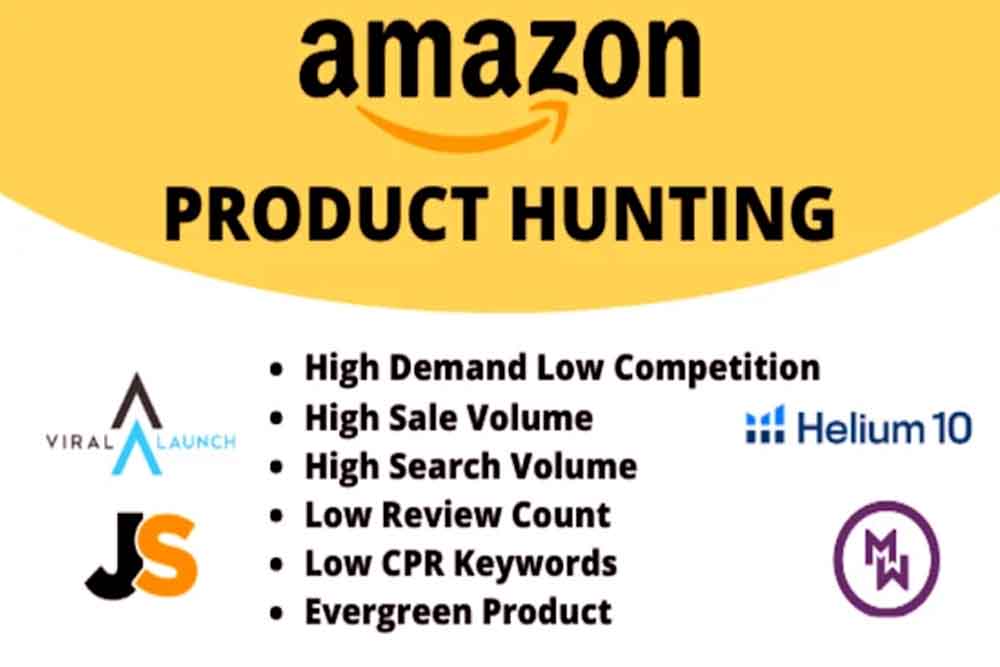
What Are Amazon Hunting Products?
Amazon hunting products are the kinds of items you find after doing proper research and planning. They usually don’t have too many sellers, a lot of people want them, and they can bring in a good profit. That’s why they’re a smart choice for both new and experienced Amazon sellers.
Product hunting is all about working smart. Instead of choosing a product based on personal preference or guesswork, you focus on what people are actually searching for and buying. When you spot trends and see where the market has gaps, you’re more likely to pick products that actually sell and bring in profit.
Why Product Hunting Matters More Than Ever
By 2025, there are over 12 million products on Amazon, and more are being added every day. With so many sellers joining in, relying on guesswork just doesn’t cut it anymore. You need a structured approach to identifying Amazon hunting products that will convert into sales.
That’s why proper Amazon product research matters so much. When you take the time to look at real data, trends, and what buyers are actually interested in, you can find great product opportunities that many sellers overlook. Done right, it’s not just about making sales—it’s about building a long-term business that keeps growing.
Signs of Winning Products on Amazon
Finding winning products on Amazon starts with knowing what to look for. Some clear indicators set successful products apart from the rest:
- Steady demand all year round
- Low to moderate competition
- Solid customer reviews (but not thousands)
- High search volume keywords
- Clear pricing advantage or product differentiation
When you spot a product that checks these boxes, it’s time to take action. With a strong supplier and optimized listing, these kinds of Amazon hunting products can lead to serious profits.
The Power of Amazon Product Research
Every smart seller knows that Amazon product research is not optional—it’s essential. It’s the first step in figuring out which Amazon hunting products are actually worth your time and money.
Doing proper research helps you avoid costly mistakes, like picking products in crowded markets or chasing trends that don’t last. Instead, you find reliable products on Amazon that sell well and keep making money over time.
Whether you’re handling the research on your own or working with professionals, the goal is the same—find products that truly have potential, backed by real numbers, not just a hunch.
How to Hunt Like a Pro
To find profitable Amazon hunting products, you need a system. Here’s a simplified step-by-step guide to product hunting:
1. Analyze Trends
Start by looking at what’s trending, but avoid one-time seasonal spikes unless you’re planning to launch a seasonal store. Consistent demand beats temporary hype.
2. Validate with Data
Use platforms like Helium 10, Jungle Scout, or AMZScout to gather data on search volume, sales history, competition levels, and pricing.
3. Spy on Competitors
Study the listings of your competitors. What are their strengths and weaknesses? Can you create a better product, add value, or offer a lower price?
4. Estimate Profit Margins
A winning product on Amazon isn’t just about revenue—it’s about profits. Always calculate your costs (product, shipping, Amazon fees) before making any moves.
5. Launch Smart
Once you’ve selected from your list of Amazon hunting products, optimize your listing with strong SEO, high-quality images, and a solid launch strategy.
When to Buy Amazon FBA Product Hunting Service
Not everyone has the time or skill to do this level of deep research. That’s why many sellers decide to buy Amazon FBA product-hunting services from professionals who specialize in this area.
A quality service will deliver a shortlist of hand-picked Amazon hunting products, complete with keyword data, competition analysis, and profit projections. It saves time, reduces risk, and helps you launch faster.
When you buy Amazon FBA product hunting service, you’re tapping into expertise that comes from working across different categories, markets, and sales trends. It’s a smart move for serious sellers who want to scale quickly.
Common Mistakes New Sellers Make in Product Hunting
If you want to succeed with Amazon hunting products, avoid these beginner mistakes:
- Falling for saturated markets (like phone cases or yoga mats)
- Ignoring product size and weight (which affects shipping costs and storage fees)
- Chasing fads without long-term demand
- Neglecting the importance of listing optimization
- Skipping proper Amazon product research
Avoiding these pitfalls gives you a much better chance at launching winning products on Amazon that bring in results.
How to Maximize Your Product’s Potential
Finding great Amazon hunting products is just the start. Once your product is live, there are ways to boost its visibility and sales:
- Use Amazon PPC campaigns to gain initial traction
- Encourage early reviews through promotions and quality service
- Keep pricing competitive but profitable
- Continuously optimize your listing based on data
Even after launch, your product journey doesn’t end. Re-invest time into improving your listing, monitoring your competition, and exploring upsell opportunities.
The ROI of Strategic Product Hunting
Investing in smart product selection pays off. When you focus on the right Amazon hunting products, the entire selling experience becomes easier. You spend less on advertising, face fewer returns, and enjoy more repeat buyers.
Especially when you buy Amazon FBA product hunting service from a trusted provider, you shorten the learning curve and get to profitability faster.
Remember, a great product choice can cover up for other beginner mistakes. But even the best branding, listings, and marketing can’t save a bad product.
Conclusion: Product Hunting Is Your Superpower
If there’s one skill every Amazon seller must master, it’s the ability to identify Amazon hunting products that truly sell. In a sea of millions of listings, the winners are those who’ve done their homework—and it all starts with excellent Amazon product research.
If you can spot winning products on Amazon early, follow trends supported by real data, and stay away from common mistakes, you set yourself up for long-term success. Whether you do it all on your own or decide to buy an Amazon FBA product hunting service, one thing always matters most—your product is the foundation of your business. Call E commerce Planners today and lift your business.
Make it strong. Make it smart. Make it sell.
Boost Sales with Our Shopify eCommerce Development Services
In today’s digital-first economy, having a strong online presence is not optional—it’s essential. Whether you’re launching a new product, expanding a retail business, or pivoting to a direct-to-consumer model, the platform you choose for your online store plays a pivotal role. This is where Shopify ecommerce development services come into play.
With its robust ecosystem, user-friendly interface, and powerful integrations, Shopify has become a favorite among entrepreneurs and businesses alike. But unlocking its full potential takes more than just signing up and choosing a theme. To compete effectively in the crowded ecommerce landscape, you need a custom-built, conversion-optimized Shopify store that reflects your brand, supports your operations, and grows with you.
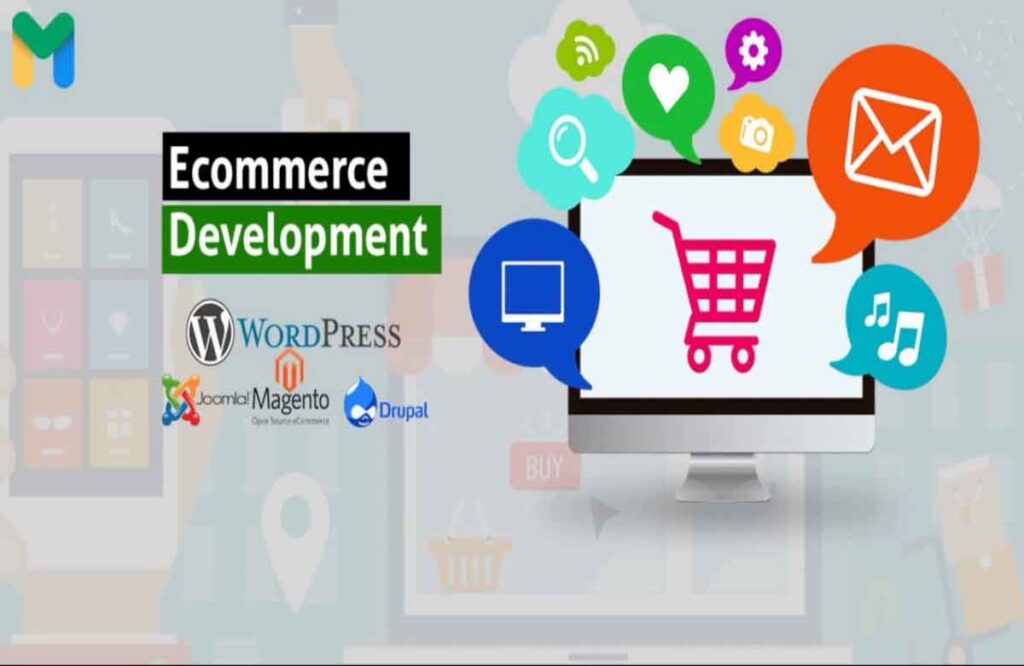
Why Choose Shopify?
Before exploring development services, it’s important to understand why Shopify is such a popular ecommerce solution.
User-Friendly Platform
Shopify is known for its intuitive interface, making it accessible to users who may not have extensive technical experience. Its drag-and-drop functionality, easy product management, and streamlined checkout system make it ideal for businesses of all sizes.
Scalability
Whether you’re running a small boutique or managing a large inventory with thousands of SKUs, Shopify scales with your business. From Shopify Basic to Shopify Plus, the platform offers tiered solutions that adapt to your needs.
Secure and Reliable
Security and uptime are critical for ecommerce. Shopify provides built-in SSL certificates, PCI compliance, and 24/7 server monitoring to ensure your store runs smoothly and securely.
The Value of Professional Shopify Ecommerce Development Services
While Shopify is designed for ease of use, developing a truly high-performing store goes beyond the basics. Here’s where professional Shopify ecommerce development services become invaluable.
Custom Store Design
A premade template might work for a hobby store, but if you want to make an impression and build trust with customers, a customized design is non-negotiable. Shopify developers can create a fully responsive, branded storefront that looks stunning on all devices and maximizes user experience.
Tailored Functionality
Every business has unique needs. Whether it’s integrating third-party apps, developing custom plugins, or streamlining the checkout process, Shopify developers can implement solutions that are specific to your operations.
Performance Optimization
A sluggish site is a conversion killer. Shopify experts optimize everything—from site speed and mobile performance to SEO structure and loading times—ensuring that your store performs at its peak, 24/7.
SEO and Conversion Strategy
Development isn’t just about design; it’s also about driving results. Shopify ecommerce development services often include on-page SEO best practices, schema markups, optimized product pages, and conversion rate optimization techniques to ensure your store ranks and converts well.
Key Components of Shopify Ecommerce Development Services
When you hire Shopify professionals, here are the core services you can expect:
1. Theme Development and Customization
Whether you want to customize an existing theme or build one from scratch, developers can design a theme that aligns perfectly with your brand. This includes layout design, custom coding, animations, and mobile responsiveness.
2. App Integration
Shopify’s App Store offers thousands of tools to enhance your store, from inventory management to email marketing. A professional developer can recommend and seamlessly integrate apps that fit your goals without bloating your site.
3. Custom Feature Development
Need a subscription model, booking system, or a custom pricing calculator? Developers can build these features directly into your Shopify site, giving you a competitive edge.
4. Migration Services
Already on WooCommerce, Magento, or BigCommerce? Shopify development services often include migration—ensuring your products, customer data, SEO rankings, and URLs transition smoothly without downtime.
5. Store Setup and Launch Support
For new businesses, these services cover the full setup—adding products, configuring payment gateways, setting up shipping rules, and testing the site before going live.
6. Ongoing Maintenance and Support
Post-launch support ensures your store remains updated, secure, and optimized. Whether it’s fixing bugs, updating themes, or adding new features, ongoing support keeps your Shopify store future-ready.
Benefits of Hiring a Shopify Development Agency
You may wonder: why not DIY or hire a freelancer? While both can work in certain cases, a professional Shopify development agency brings strategic depth and long-term value. Here’s how:
Holistic Approach
Agencies offer end-to-end solutions—from design and development to SEO and digital marketing. This means every part of your ecommerce journey is aligned under one vision.
Expert Team
You’re not relying on a single developer. Instead, you get access to a team of specialists—UX designers, backend coders, SEO experts—each contributing to a superior outcome.
Scalability and Speed
Agencies have the manpower to deliver large-scale or urgent projects without compromising quality. This helps your business scale faster and more reliably.
Shopify Plus: Enterprise-Grade Development
For high-volume merchants, Shopify Plus offers a more robust framework—better performance, more automation tools, and advanced integrations. If you’re operating at scale, Shopify Plus development services can include:
- Custom checkout scripting
- Dedicated account managers
- Wholesale channel setups
- Global ecommerce solutions
Hiring developers familiar with Shopify Plus ensures you fully leverage its enterprise capabilities.
Industry Use Cases
Shopify supports a wide variety of industries, and development services are tailored to suit:
- Fashion and Apparel: Custom lookbooks, size guides, and inventory syncing with physical stores.
- Health and Beauty: Subscription boxes, bundling features, and customer review integrations.
- Food and Beverage: Custom shipping logic, expiration tracking, and integration with delivery services.
- Home and Furniture: 3D visualization, room planners, and AR tools.
Choosing the Right Shopify Development Partner
When selecting a Shopify development service provider, consider the following:
- Portfolio: Look for diverse projects that showcase innovation and problem-solving.
- Client Reviews: Check platforms like Clutch, Upwork, and Google Reviews.
- Technical Expertise: Ensure proficiency in Liquid (Shopify’s coding language), JavaScript, HTML/CSS, and API integrations.
- Communication: Clear timelines, regular updates, and responsiveness are essential.
Final Thought
Shopify ecommerce development services are more than just technical assistance—they are a strategic investment in your brand’s online success. A professionally designed and developed Shopify store offers not only aesthetic value but also functionality, speed, and the ability to scale as your business grows. With the right partner, your Shopify store becomes a high-performing sales machine that delights customers and drives consistent growth.
Boost Sales with Expert Amazon Listing Optimization Services
In the fiercely competitive world of e-commerce, your product listing is your digital storefront—and if it’s not compelling, clear, and conversion-focused, you’re losing sales. This is where Amazon listing optimization services come into play. Whether you’re a seasoned seller or just stepping into the marketplace, optimizing your product listings can be the difference between mediocre performance and outstanding success.
From keyword research to persuasive copywriting, these services are built to align your listing with Amazon’s A9 algorithm and customer expectations.

Understanding Amazon Listing Optimization
Before diving into the services themselves, it’s essential to understand what Amazon listing optimization means. It’s the process of enhancing every element of your product listing—title, bullet points, product description, backend keywords, and images—so your product ranks higher in search results, attracts more clicks, and converts more visitors into buyers.
Amazon’s algorithm prioritizes relevance, customer satisfaction, and sales velocity. When your listing checks these boxes, it becomes more discoverable to shoppers actively searching for what you sell.
What Do Amazon Listing Optimization Services Include?
Professional Amazon listing optimization services are comprehensive. Here’s a breakdown of what’s typically offered:
1. Keyword Research and SEO Integration
Keywords are the foundation of your product’s visibility. Experts use advanced tools and market insights to uncover high-converting search terms relevant to your product. These keywords are then strategically placed in your title, bullet points, and backend fields to improve ranking.
2. Compelling Titles and Bullet Points
The product title needs to balance clarity, keyword richness, and readability. Optimization specialists craft titles that not only attract search engines but also appeal to human readers. Bullet points focus on highlighting product features and benefits concisely, encouraging faster buying decisions.
3. Persuasive Product Descriptions
A well-written product description doesn’t just describe—it sells. Optimized descriptions are structured to tell a story, overcome objections, and persuade the reader. They also maintain keyword density without sounding robotic.
4. Image Optimization
High-quality images are a must. Services often include guidance on the types of images you should use (e.g., lifestyle shots, infographics) and how to format them to meet Amazon’s guidelines. Some services even provide professional photography or graphic design.
5. A+ Content and Brand Store Setup
For brand-registered sellers, optimization goes beyond basic listings. Professionals can help you build engaging A+ Content that elevates your brand and improves conversion rates. Setting up a cohesive and interactive brand store is also part of this service.
6. Backend Keyword Optimization
Many sellers overlook backend search terms. These are invisible to customers but vital to the algorithm. Experts ensure your backend fields are fully utilized without violating any policies.
Why Amazon Listing Optimization Services Are Essential
1. Increased Visibility
Without the right keywords, even the best products can remain buried. Optimization boosts your rankings in Amazon’s search results, ensuring that more shoppers see your product.
2. Higher Conversion Rates
It’s not just about being seen—it’s about convincing shoppers to click and buy. Professionally optimized listings speak directly to customer pain points and showcase your product’s value.
3. Reduced Return Rates
Clear, informative listings help set accurate expectations. When customers know exactly what they’re buying, they’re less likely to return the item, saving you time and money.
4. Improved Ad Campaign Performance
If you’re running Amazon PPC ads, a poorly optimized listing can hurt your results. When your listing is optimized, your ad spend is more effective because conversions are higher.
5. Competitive Advantage
Thousands of sellers compete in every niche. An optimized listing helps you stand out. It’s one of the few elements fully within your control—why not make the most of it?
Who Should Use Amazon Listing Optimization Services?
These services aren’t just for new sellers. Here’s who can benefit:
- New Sellers: Establish a strong foundation with optimized listings from the start.
- Existing Sellers: Revamp underperforming listings and improve stagnant sales.
- Private Label Brands: Create a strong brand voice and presence with enhanced content.
- Agencies or Aggregators: Manage multiple listings efficiently and maintain consistency.
Whether you’re selling one product or managing a whole catalog, optimization services can scale with your needs.
Choosing the Right Optimization Service
Not all services are created equal. Here’s what to look for:
1. Experience and Track Record
Choose a service provider with proven results. Case studies, testimonials, or even before-and-after examples can give insight into their effectiveness.
2. Customized Approach
Avoid one-size-fits-all solutions. The best services analyze your niche, competition, and product before crafting your listing.
3. Data-Driven Strategies
Good providers use real-time data and Amazon’s evolving algorithm to guide decisions. They should be using tools like Helium 10, Jungle Scout, or SellerApp.
4. Compliance Knowledge
Amazon has strict content guidelines. A professional service ensures your listings stay compliant to avoid penalties or de-listings.
5. Additional Services
Look for agencies that also offer PPC management, brand registry support, or review generation strategies for a comprehensive growth plan.
DIY vs. Professional Services
You can optimize your listings, and many sellers start this way. But consider the time investment, the learning curve, and the risk of trial-and-error. If you’re serious about scaling on Amazon, hiring professionals can save time and maximize ROI.
Common Mistakes These Services Help Avoid
- Keyword stuffing: Overloading a listing with keywords makes it unreadable.
- Generic content: Failing to differentiate your product or appeal emotionally.
- Weak images: Low-quality visuals that reduce trust and interest.
- Inaccurate claims: Leading to negative reviews or suspension.
- Neglected backend fields: Losing out on hidden ranking potential.
Professionals are trained to sidestep these issues, giving your product the best chance to succeed.
The ROI of Amazon Listing Optimization
This isn’t an expense—it’s an investment. Optimized listings can result in:
- Up to 3x more visibility
- As much as a 2x conversion rate increase
- A stronger brand reputation
- Better organic rankings over time
The returns often far outweigh the initial cost, especially when paired with advertising and customer service excellence.
Final Thought
Your Amazon listing is more than just a digital description—it’s a powerful marketing tool. In a crowded marketplace where every detail matters, Amazon listing optimization services are not just helpful—they’re essential. They allow you to present your product in the best light, reach the right customers, and turn views into valuable sales.
Amazon SEO Copywriting Services to Skyrocket Your Sales
If you’re selling on Amazon, you’re in one of the most competitive digital marketplaces in the world. Every day, millions of buyers search for products, and sellers race to the top of Amazon’s algorithm. What sets apart successful sellers? One secret weapon is Amazon SEO copywriting services—the art of combining persuasive content with keyword-rich optimization tailored specifically for Amazon’s search engine, A9.
As a writer who’s spent years understanding the psychological triggers behind consumer decisions and the technical SEO elements that matter, I can tell you this: words sell.
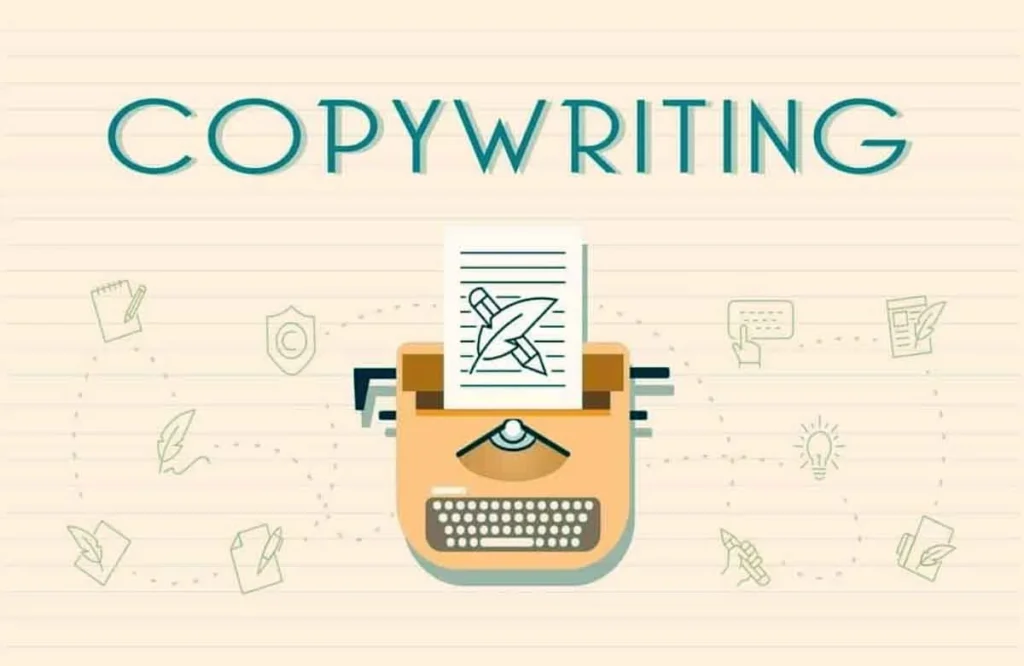
Understanding Amazon SEO: The Foundation of Visibility
Unlike Google, Amazon is a product-based search engine. Its sole goal is to connect users with the most relevant products they’re likely to purchase. This means that the platform’s A9 algorithm prioritizes product listings that are not only rich in keywords but also convert well.
Here’s what Amazon SEO boils down to:
- Relevance: Are your keywords aligned with what shoppers are searching for?
- Performance: Do your listings get clicks, conversions, and positive reviews?
- Content Quality: Is your listing professionally written and persuasive?
When you hire Amazon SEO copywriting services, you’re investing in copy that is meticulously crafted to satisfy all three factors.
What Does Amazon SEO Copywriting Include?
Let’s break down the anatomy of a high-performing Amazon listing created by a professional SEO copywriter.
1. Keyword-Rich Product Titles
Your product title is the first thing shoppers see. It must contain high-volume keywords, follow Amazon’s formatting rules, and still sound appealing. A good copywriter can balance these elements seamlessly.
Example:
Bad Title: Bluetooth Speaker
Good Title: Portable Bluetooth Speaker with HD Sound, 12-Hour Battery – Waterproof & Wireless for Outdoors
Notice the difference? The second one is keyword-rich, benefit-focused, and compelling.
2. Bullet Points That Convert
Bullet points aren’t just a checklist of features—they’re a chance to highlight benefits, tackle objections, and emotionally connect with the buyer.
A seasoned Amazon copywriter will structure bullet points that emphasize:
- What makes your product unique
- How does it solve a problem
- Why the customer should trust your brand
3. Compelling Product Descriptions
This section allows you to tell your brand story, highlight use cases, and bring the product to life. Amazon SEO copywriting ensures this section is infused with keywords and structured for readability.
Good descriptions are persuasive, formatted for mobile, and written in a tone that aligns with your target audience.
4. Backend Search Terms
These are the hidden keywords you enter into the backend of your listing. A professional copywriting service will include keyword research that ensures you’re ranking for both primary and long-tail phrases, including misspellings, synonyms, and regional terms.
Why You Need Professional Amazon SEO Copywriting Services
Many sellers make the mistake of writing listings themselves, assuming that listing a product is just about putting in the facts. The result? Their listings get buried.
Here’s what an experienced Amazon copywriter brings to the table:
1. In-Depth Keyword Research
Using tools like Helium 10, Jungle Scout, and others, a pro identifies not just high-traffic keywords, but also those with high purchase intent and low competition.
2. Competitor Analysis
An expert doesn’t just write; they study their competitors. What are they doing right? Where are they lacking? A great copywriter will capitalize on competitor weaknesses to position your product as the better choice.
3. A/B Testing and Data-Driven Strategy
Top-tier services often work with Amazon sellers to test different titles, bullets, or descriptions. They know how to measure what works and continuously optimize their content.
4. Conversion Copywriting Techniques
Using psychological triggers like scarcity, urgency, social proof, and authority, a professional copywriter crafts content that gets shoppers to click Add to Cart.
Benefits of Using Amazon SEO Copywriting Services
When done right, here’s what optimized copy can do for your Amazon business:
Improved Search Rankings
Well-researched keywords in your title, bullets, and description will help your listings show up higher in Amazon search results.
Higher Conversion Rates
Persuasive, benefit-focused writing leads to more sales. It answers buyer questions before they even ask.
Lower Advertising Costs
A well-optimized listing can reduce your reliance on PPC ads because you’re naturally ranking for relevant keywords.
Enhanced Brand Credibility
Professional, polished copy makes your brand look trustworthy and premium, especially important in a sea of generic listings.
Choosing the Right Amazon SEO Copywriting Service
Not all copywriters are created equal. When selecting a service, look for these qualities:
- Amazon Experience: Have they worked specifically with Amazon listings before?
- SEO Knowledge: Do they understand how Amazon’s A9 algorithm works?
- Portfolio of Listings: Can they show proof of previous listings and improvements in ranking or sales?
- Industry Familiarity: Do they understand your niche and audience?
Some sellers opt for freelance platforms, while others prefer specialized Amazon agencies. Either way, look for real results and not just flowery language.
How Much Do Amazon SEO Copywriting Services Cost?
Prices vary widely depending on experience and depth of service. Here’s a rough range:
- Basic Listing Copy (Title + Bullets + Description): $50 – $150
- Premium Packages with Keyword Research + Backend Terms: $200 – $500
- Full A+ Content and Branding Packages: $500+
While it may seem like an upfront cost, the ROI is massive if it leads to consistent conversions, better ranking, and less dependence on ads.
Can You DIY Amazon SEO Copywriting?
Sure, but it’s risky if you’re not trained in copywriting or SEO. Many sellers write their copy and unknowingly:
- Stuff irrelevant keywords
- Write dull, feature-only bullets
- Forget backend search terms
- Ignore formatting for mobile
If you have the time to study SEO, copywriting, keyword tools, and Amazon’s ever-changing rules, go for it. But most serious sellers see better results by hiring pros who live and breathe this work.
Final Thought
In the high-stakes arena of Amazon, your product isn’t the only thing being judged—your words are, too. Amazon SEO copywriting services combine the science of keywords with the art of persuasion to create listings that not only get seen but also get sales.
Amazon SEO Services in Austin, TX – Grow Your Brand Online
Austin stands tall not just as a hub of music and culture, but also as a breeding ground for digital innovation. As more sellers compete for space on Amazon’s massive marketplace, the need for specialized Amazon SEO services in Austin, TX has become more crucial than ever. If you’re a seller looking to elevate your listings, dominate product rankings, and outpace competitors, leveraging local SEO experts might be your golden ticket.
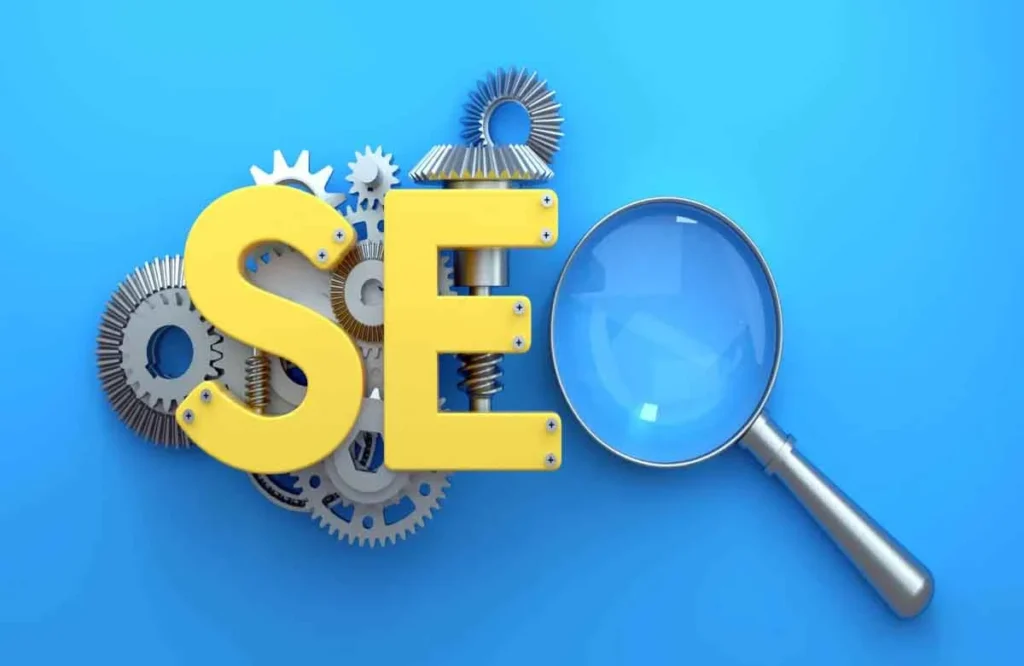
Understanding Amazon SEO: More Than Just Keywords
When we think of SEO, Google often comes to mind. But Amazon’s A9 algorithm works differently. While Google rewards websites with rich content and backlinks, Amazon rewards product listings that convert, meaning titles, bullet points, descriptions, images, and backend search terms must all work harmoniously to drive sales.
At its core, Amazon SEO (Search Engine Optimization) involves optimizing product listings to appear at the top of Amazon’s search results for relevant keywords. This includes:
- Keyword research tailored for buyer intent
- Optimized product titles and bullet points
- High-converting product descriptions
- Backend search term integration
- Use of Enhanced Brand Content (A+ content)
- Managing customer reviews and seller feedback
Amazon SEO isn’t static — it evolves based on customer behavior, competitors’ strategies, and changes to the platform’s algorithm. That’s where professional Amazon SEO services in Austin, TX come into play.
Why Choose Local Amazon SEO Services in Austin, TX?
With thousands of agencies claiming SEO expertise, choosing a local partner can offer some unique advantages, especially in a vibrant, tech-driven city like Austin. Here’s why going local makes sense:
1. Personalized Consultation and Strategy
Agencies based in Austin understand the pulse of the local economy and consumer behavior. They provide face-to-face consultations and craft customized SEO strategies instead of cookie-cutter templates.
2. Proximity Equals Accountability
Working with a local Austin-based team builds trust. You’re not dealing with outsourced teams in different time zones — you’re collaborating with professionals who are just a drive away.
3. Austin’s Talent Pool
Austin’s booming tech scene means access to skilled marketers, data analysts, and SEO specialists who understand the intricacies of Amazon’s marketplace.
Key Features to Look for in Amazon SEO Services
Not all SEO services are created equal. Whether you’re a startup launching your first private label or an established brand scaling globally, the following features should be non-negotiable when choosing Amazon SEO services in Austin, TX:
Keyword Research and Market Analysis
A robust keyword strategy is foundational. Look for agencies that conduct in-depth keyword research using tools like Helium 10, Jungle Scout, and AMZScout, targeting both short-tail and long-tail keywords.
Listing Optimization
Your listings must not only rank well but also convert. A great SEO service will optimize your titles, bullet points, descriptions, and images while aligning them with Amazon’s algorithm.
A+ Content and Brand Store Development
If you’re a registered brand, your SEO agency should help you leverage A+ Content and build a compelling Brand Store. These visual elements significantly improve conversion rates.
Review and Feedback Management
Positive reviews build trust. SEO services should include strategies to ethically gather reviews and manage feedback, essential for maintaining high seller ratings.
Competitor Analysis
Your competitors are optimizing too. Choose an agency that regularly tracks competitor strategies and adjusts yours accordingly.
Data Reporting and Analytics
Transparency is key. The best services offer regular reports on keyword rankings, sales performance, conversion rates, and traffic insights.
How Amazon SEO Impacts Your Bottom Line
Let’s face it: if you’re not visible, you’re not selling. With over 300 million active customer accounts, Amazon is where buyers come with a credit card in hand. Here’s how SEO directly affects your profits:
- Higher Rankings = More Visibility
- The top three search results on Amazon get the lion’s share of clicks. Ranking higher for your main keywords dramatically increases your traffic.
- Better Listings = Higher Conversions
- Well-written, keyword-rich listings build trust and lead to higher conversion rates, meaning more buyers choose your product over a competitor’s.
- Optimized Backend = Algorithm Boost
- Backend keywords and structured data help Amazon’s A9 understand your product better, improving discoverability even for voice and mobile searches.
- Improved ROI on Ads
- SEO-optimized listings perform better when paired with Amazon PPC ads. You’ll pay less per click and convert more, stretching your advertising budget further.
Who Needs Amazon SEO in Austin, TX?
If you’re selling on Amazon and based in Austin or anywhere in Texas, you’re in a prime spot to capitalize on local talent. Here’s who can benefit:
- Private Label Brands
- Whether you’re selling health supplements or kitchen gadgets, SEO gives you a competitive edge.
- Retail Arbitrage Sellers
- Optimizing even third-party listings can improve sales velocity and Buy Box percentages.
- Handmade and Artisan Sellers
- With Austin’s strong maker community, optimizing your handcrafted products ensures they’re seen by a wider audience.
- Established Brands Expanding on Amazon
- If you’re moving from Shopify or Walmart to Amazon, a local SEO agency can ensure a smooth transition and fast ranking success.
The Future of Amazon SEO in Austin’s Business Landscape
As Amazon continues to grow, so does the need for effective SEO. Austin’s fast-paced business environment is ideal for innovation, experimentation, and digital growth. Amazon SEO will no longer be optional — it will be the deciding factor in who dominates the marketplace.
Local agencies are already beginning to offer bundled services — SEO, PPC, product photography, branding, and logistics support — making them a one-stop shop for Amazon growth. As AI and automation continue to advance, Austin-based firms are well-positioned to integrate these technologies into their SEO strategies, giving clients a future-proof edge.
Final Thought
Amazon SEO is a game-changer, especially in a hyper-competitive space where every click and conversion counts. For businesses in Austin, TX, investing in local Amazon SEO services is more than just a marketing move — it’s a strategic partnership toward long-term success. From personalized consultations to data-driven optimization, Austin agencies bring the perfect blend of tech innovation and local insight to help your products climb to the top of Amazon’s search results. Don’t just sell — rank, convert, and lead.
Is WordPress Good for Small Business Owners on a Budget?
In today’s digital-first economy, having a reliable online presence isn’t a luxury—it’s a necessity. For small businesses aiming to compete, connect with customers, and grow, choosing the right platform to build a website is a foundational step. Among the many options available, WordPress consistently stands out. But is WordPress good for small business? The short answer is yes, and this article will explore the reasons why WordPress is often the best fit for small business owners looking for power, flexibility, and value.

What is WordPress?
Before diving into its benefits, it’s important to understand what WordPress actually is. WordPress is a content management system (CMS) that allows users to build and manage websites without needing extensive programming skills. Launched in 2003, it has grown to power over 43% of all websites globally. It comes in two forms: WordPress.org (self-hosted and free) and WordPress.com (hosted with various pricing tiers).
Easy to Use Yet Extremely Powerful
One of the main reasons WordPress is good for small businesses is its user-friendliness. Many small business owners don’t have a background in coding or web development, and hiring full-time IT staff isn’t always feasible. WordPress bridges that gap. Its dashboard is intuitive, and with a bit of guidance, almost anyone can update content, publish blog posts, and manage pages.
At the same time, WordPress is incredibly powerful. It supports a vast library of plugins—over 60,000 free ones on WordPress.org alone—that can add virtually any feature you can imagine: from contact forms and SEO tools to online booking systems and payment gateways.
Cost-Effective for Startups and Small Enterprises
Budget is often a major concern for small businesses. Traditional web development can be costly, involving high upfront fees and ongoing maintenance costs. WordPress itself is free to use. You’ll need to pay for a domain and hosting (which can cost as little as $50–$100 per year), but that’s a small investment compared to custom-built websites.
Additionally, many themes and plugins are free or affordable. This means you can build a professional-looking website for a fraction of what you might pay an agency. Even when using premium themes or hiring freelance developers for customization, the overall expense remains within a manageable range for most small businesses.
Customization and Flexibility
Every small business is unique, and your website should reflect that. WordPress offers unparalleled customization options. With thousands of themes—both free and premium—you can find a design that fits your brand. And if you want to go a step further, themes can be modified using custom CSS or child themes.
Plugins expand functionality in every direction. Need to add an appointment calendar? There’s a plugin for that. Want to integrate a live chat tool or set up e-commerce? There are plugins for that, too. This flexibility is key for small businesses that need their websites to grow and adapt as their operations evolve.
SEO-Friendly Structure
Search engine optimization (SEO) is crucial for any business wanting to be found online. WordPress is designed with SEO best practices in mind. It generates clean, semantic code that search engines love. Moreover, plugins like Yoast SEO and All in One SEO Pack make it easy to optimize meta tags, URLs, and content for better visibility.
Because Google favors mobile-friendly and fast-loading websites, most WordPress themes are responsive and can be optimized for performance. All these factors contribute to higher search engine rankings, making it easier for potential customers to find your business.
Mobile Responsiveness Out of the Box
As more users access the web via smartphones and tablets, having a mobile-responsive website isn’t optional—it’s essential. Most modern WordPress themes are built to be responsive, meaning they automatically adapt to different screen sizes and devices. This ensures that your site provides a seamless user experience, no matter how visitors reach it.
Better user experience translates to higher engagement, longer site visits, and increased chances of conversions, which is exactly what small businesses aim for.
Built-In Blogging Capabilities
Content marketing is a highly effective strategy for small businesses. Regularly publishing blog posts can drive traffic, boost SEO, and establish your brand as an authority in your industry. WordPress was originally designed as a blogging platform, and it still excels at this function.
With features like categories, tags, RSS feeds, and scheduled publishing, managing a blog on WordPress is straightforward. Plus, you can easily share your content across social media platforms to reach a wider audience.
Strong Community and Support
Another reason WordPress is good for small businesses is its global community. With millions of users and developers contributing to its growth, you’re never far from help. Whether you need a quick fix or want to dive into a full customization project, there’s a wealth of tutorials, forums, and professional services available.
Additionally, many hosting providers offer managed WordPress hosting with built-in support, making site maintenance easier for non-technical users.
Scalability for Future Growth
What starts small today might scale up tomorrow. The beauty of WordPress lies in its scalability. Whether you’re running a one-page site or a full-fledged e-commerce store, WordPress can handle it. You can start with the basics and expand functionality as your business grows.
Need to add more products, services, or languages? No problem. WordPress can grow with you, eliminating the need to switch platforms later on and avoiding costly migration processes.
Security and Regular Updates
Security is a valid concern, especially for small businesses handling customer information. WordPress takes security seriously. It is constantly updated to patch vulnerabilities, and many security plugins are available to enhance protection further.
Moreover, automatic backups and SSL integration are simple to implement, giving peace of mind that your data—and your customers’—is safe. By following basic best practices and staying updated, WordPress can be a secure option for your business.
Ideal for E-Commerce
With the rise of online shopping, many small businesses are expanding into e-commerce. WordPress, through plugins like WooCommerce, makes this transition easy and affordable. WooCommerce is a powerful, free plugin that turns your WordPress site into a fully functional online store. It supports various payment gateways, inventory management, shipping configurations, and more.
This makes WordPress a perfect solution not just for service providers but also for product-based businesses looking to sell online without paying hefty fees to third-party platforms.
Drawbacks to Consider
While WordPress is packed with advantages, it’s also important to acknowledge some potential drawbacks. Because it’s open-source and flexible, it can be vulnerable if not properly maintained. Neglecting updates, using too many plugins, or choosing poorly coded themes can slow down your site or expose it to threats.
That said, these issues are easily avoidable with minimal maintenance and by using trusted plugins and themes. With the right precautions, these minor drawbacks are far outweighed by the platform’s strengths.
Final Thought
So, is WordPress good for small businesses? Absolutely. Its unmatched combination of affordability, flexibility, ease of use, and scalability makes it a top contender for small business websites. Whether you’re launching a basic site, managing a growing online store, or building a content-rich blog, WordPress offers the tools and support needed to succeed.
For entrepreneurs and business owners who want full control over their digital presence without breaking the bank, WordPress delivers on all fronts. In a world where online visibility can make or break a small business, WordPress provides a smart, sustainable path forward.
Boost Your Business with Expert Brand Building Services 2025
In today’s saturated marketplace, standing out is not just beneficial—it’s essential. Companies, big and small, must develop a distinct and memorable identity to capture and retain customer attention. That’s where brand building services come into play. These specialized services help shape how a business is perceived, crafting not only visual aesthetics but also voice, tone, and emotional resonance. As a writer passionate about business growth, I can say confidently that brand building is the backbone of any sustainable enterprise.
Understanding the Essence of Brand Building
Before diving deep into what brand building services entail, it’s important to understand what “brand” truly means. It is the holistic perception of your company in the eyes of customers. Every touchpoint—your website, social media customer service, product packaging—contributes to brand identity.
Brand building, therefore, is the process of defining, refining, and promoting this identity. It’s a strategic endeavor aimed at fostering trust, loyalty, and recognition.

Key Elements of Brand Building Services
Professionals who offer brand building services provide a comprehensive suite tailored to elevate your brand’s presence. Let’s explore the core components:
Brand Strategy Development
This is the foundation. Service providers work closely with clients to understand their mission, values, goals, and target audience. From this information, they create a strategic roadmap that informs all future branding efforts. It’s about aligning your internal culture with external messaging.
Visual Identity Design
A consistent visual identity not only looks professional but also enhances brand recall. Think of Nike’s swoosh or McDonald’s golden arches—iconic and instantly recognizable.
Messaging and Voice
A strong brand has a unique voice. Whether you’re witty, formal, inspirational, or bold, your brand’s tone must remain consistent across all platforms. Experts help develop taglines, mission statements, and brand stories that emotionally resonate with your audience.
Digital Presence and Website Branding
Brand building services ensure that your website, social media profiles, and content are consistent with your identity and optimized for engagement.
Brand Guidelines Creation
To maintain consistency, professionals create a brand book that outlines all the elements of their brand. This ensures that any future design, content, or marketing aligns with your identity.
Why Businesses Need Professional Brand Building Services
You might wonder—why not build a brand in-house? While that is possible, it often lacks the finesse, research, and coherence that professionals bring. Here’s why expert services matter:
They Bring a Fresh Perspective
Branding agencies or consultants bring an outsider’s viewpoint, which helps identify strengths and weaknesses you might overlook.
They Offer Specialized Skills
From graphic design to copywriting to market research, brand building services come with a team of experts who understand each aspect of branding deeply.
They Save Time and Resources
Building a brand from scratch—or refreshing an existing one—is time-consuming. Outsourcing it allows you to focus on core operations while experts handle the intricacies.
How Brand Building Affects Business Performance
Investing in brand building services isn’t just about aesthetics—it’s a revenue-driving strategy. Here’s how a strong brand influences your bottom line:
Increases Customer Loyalty
People connect with brands they trust and relate to. A well-crafted brand story can create emotional bonds that result in repeat business.
Enhances Recognition
Consistent branding increases visibility and makes your business more recognizable. Over time, your brand becomes synonymous with your product category.
Allows Premium Pricing
Strong brands command higher prices. Consumers are willing to pay more for names they recognize and trust, as they associate them with quality and reliability.
Boosts Employee Morale
A defined brand identity fosters a sense of pride and belonging among employees. When your team believes in your brand, they become enthusiastic ambassadors.
Transitioning from a Basic Identity to a Powerful Brand
Let’s take a small business as an example—a bakery named “Sweet Crumbs.” Initially, it has a generic logo, inconsistent social media posts, and no clear message. After investing in brand building services, the bakery now has a warm and inviting color palette, a story that speaks to family values and homemade goodness, and a social media presence that highlights customer testimonials and delicious visuals. The result? More foot traffic, higher social media engagement, and increased word-of-mouth referrals.
That transformation is the power of brand building. It’s not about changing who you are—it’s about showing the world your best version.
Choosing the Right Brand Building Service Provider
Now that the importance is clear, the next step is selecting the right partner. Here’s what to look for:
- Portfolio & Case Studies: Check their previous work and see if their style aligns with your vision.
- Client Reviews: Testimonials and ratings speak volumes about reliability and results.
- Customization: A one-size-fits-all approach doesn’t work in branding. Ensure they offer tailored strategies.
- Communication: The ability to communicate ideas, provide updates, and incorporate feedback is essential.
- Scalability: Your brand may evolve. Choose a partner who can scale services as your business grows.
The Evolving Nature of Branding
Branding isn’t a one-time effort. Trends, markets, and consumer behaviors change. Therefore, brand building services often include ongoing consultation, brand audits, and updates. For instance, sustainability is becoming a critical brand value in 2025. Companies that adapt and reflect this value in their messaging and operations gain favor with conscious consumers.
Rebranding or refreshing elements periodically ensures your brand remains relevant. Whether it’s tweaking your color scheme or updating your value proposition, evolution is key.
Real-Life Success Stories
Let’s glance at a few brands that transformed professional brand building:
- Old Spice: Once perceived as outdated, a strategic rebrand with bold, humorous advertising turned them into a favorite among younger demographics.
- Airbnb: By redefining their brand around belonging and unique experiences, they grew from a niche service into a global powerhouse.
- Dove: Their “Real Beauty” campaign, grounded in authenticity and inclusivity, redefined beauty marketing and earned consumer loyalty.
These examples underscore the massive impact professional brand building services can have when executed correctly.
Final Thought
In conclusion, brand building services are not just about creating a logo or choosing a color scheme—they are about developing a compelling, consistent identity that resonates across every channel and with every audience. Whether you’re launching a startup or refreshing an established business, investing in professional branding can spell the difference between blending in and standing out. A strong brand doesn’t just tell the world what you do; it shows them who you are—and why it matters.

